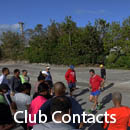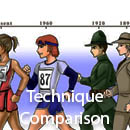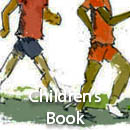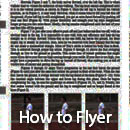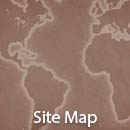Resources - Comparison of Race Walking Techniques Through the Ages
As long as I have been race walking people have been arguing over technique and training methodology. Thanks to Maury Silverman who provided me with a copy of a 1924 book, "The Walking Cure", I learned that little has changed, people have always been arguing about proper walking technique. The first half of "The Walking Cure" is an excellent survey of the various styles of walking and the associated benefits from walking. While not a book on race walking, it is a good walking book.
Basic Truisms
MacFadden's believes that walking is the route to perfect health. He defines health as "the perfect functioning of every organ and every tissue and every individual cell in the body." Not many of us would argue with that.MacFadden exalts the health benefits of walking. While the basic idea of his claims are valid, the extent to which he claims walking can cure almost everything reeks of late night infomercials we hear touting miracle products to solve all your health problems. An interesting historical note, even in 1924 he warns against eating white bread, white flour products, and uncoated rice. As we know today, whole foods are much better than these vacuous processed foods. He also suggests to refraining from "hot rebellious poisons" such as alcohol and tobacco.
Another of MacFadden's incredibly resilient truisms was his description of race walking. Although he never refers to "race walking" as such, he mentions a "bent-knee method of walking" that from the side shows the knee is raised to a "ridiculous height." MacFadden claims that this "goose-step" walking method "will never become popular in this country, because of the awkward effect it produces, and because it has to be cultivated." We are all too aware of the mockery we receive when out race walking; nor will many of us deny the lengths we have gone to excel at efficient race walking technique.
Walking Methodology
When MacFadden discusses walking it seems similar to modern soda advertisers: "Image is everything" Much text discusses how to dress and appear while walking.Posture
MacFadden describes proper walking style as walking with the body erect, head back, chin in, chest prominent, and abdomen free. He continues, to walk properly take deep breaths when walking. This is pretty close to how I might describe the posture of race walking, with the exception of the chest prominence. He has the right idea about breathing, yet later in the book he states that one should breathe through the nose. Unless you are walking in extremely cold weather, it is more desirable to breathe through your mouth.Foot Placement
MacFadden emphasizes that for efficient walking the foot should be pointed straight ahead. This is ideal, although some walkers unintentional point their toe slightly in or slightly out. I believe those individuals who naturally point in or out should not try to radically change their foot placement. According to MacFadden, other experts of his day were actually teaching a walking technique that advocated point their feet out at a 45 degree angle when walking. While MacFadden recognizes the inefficiency of this style of walking: he suggests that if you have flat feet, one should turn your toes in slightly. This is intended to strengthen your arch.According to Jay Bellias, D.O., this is not correct. The muscle power in our feet and lower legs cannot accommodate the bones in the arch to reposition themselves to a significant advantage. Instead he suggests realigning the joints and bones using an orthotic.
I believed that race walking was called "heel-toe walking" because of the obvious heel plant and push off from the back foot. I was not aware of how much of a contrast "heel-toe walking" was from the traditional form of walking for exercise. According to MacFadden, experts of his time claimed proper walking technique was either to land on the tips of your toes or the balls of your feet. In discussing MacFadden's book with Howie Jacobson, one of America's most experience walking coaches, coach Jacobson said that even some modern day "experts" on walking have, until the last decade, still touted landing on the balls of the feet as proper. MacFadden suggests that the rationale for this was that it appears to have poise as well as a being a noiseless means of travel. Again we see that in the early days of walking, image was key.
Edward Payton Weston, one of the most accomplished long distance walkers of all time, preached another methodology of walking. He did not advocate heel-toe walking, because it forced the foot to land with a thump and excessive push off strained the toe tips. Weston suggests landing on a flat foot, causing the impact force to be evenly distributed throughout the foot. Although Edward Payton was quite successful in his day, "proof by example" is not a tenant of science.
Compared with Weston's flat footed approach, MacFadden claims his "experiments" concluded that when you place the heel on the ground first and then leave the toe on the ground to that last possible moment your toe will help spring the body forward. This is similar to what we practice in the propulsion phase of the race walking gait.

